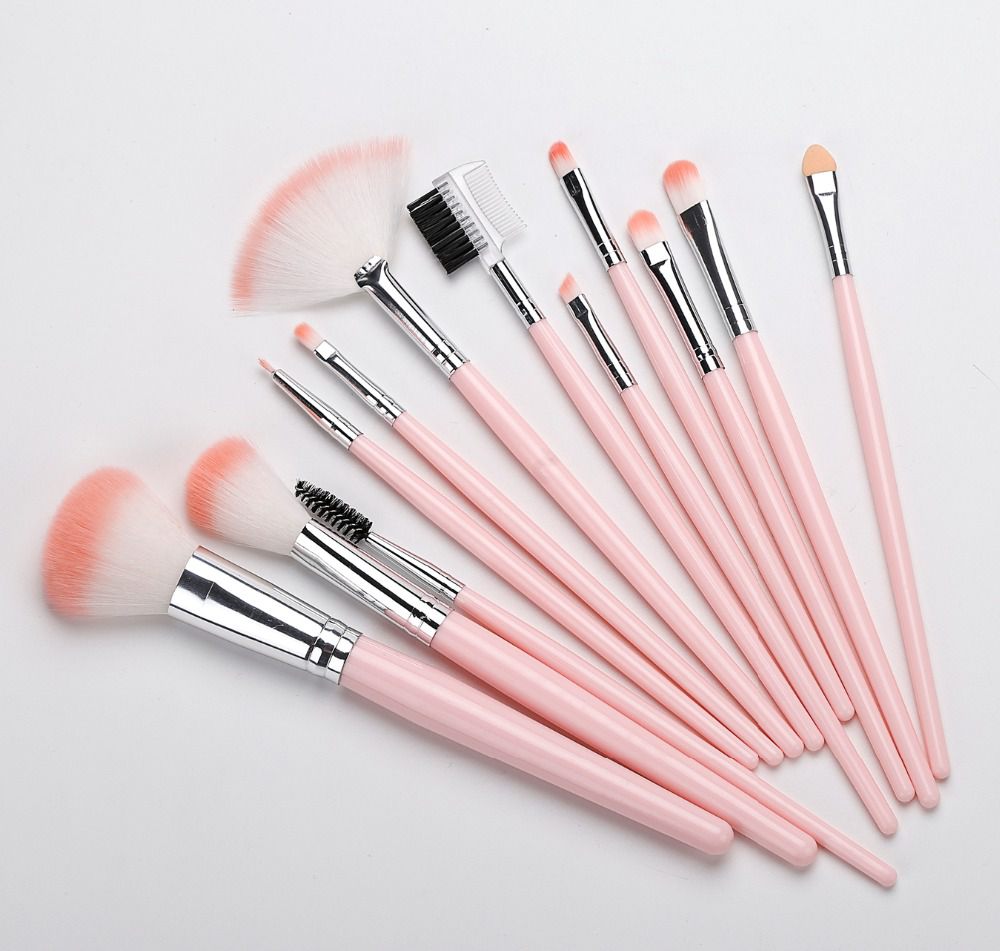Industry news
Synthetic Bristle Elasticity: Cross-Linking Methods to Reduce Bending and Maintain Shape
- 245 Views
- 2025-11-12 01:32:12
Synthetic Bristle Elasticity: How Cross-Linking Methods Reduce Bending and Maintain Shape
In the cosmetic industry, synthetic bristles have become a cornerstone of modern makeup brushes, prized for their cruelty-free credentials, consistency, and cost-effectiveness. However, one critical challenge persists: maintaining elasticity to resist bending and retain shape during repeated use. For consumers, a brush that bends out of shape compromises application precision—whether blending foundation evenly or picking up powder effectively. For manufacturers, this translates to product dissatisfaction and reduced brand loyalty. The solution lies in optimizing elasticity through cross-linking methods, a scientific approach that transforms polymer structures to enhance resilience.

Elasticity is the backbone of synthetic bristle performance. A high-quality cosmetic brush demands a balance between softness and structural integrity: too rigid, and it irritates the skin; too flexible, and it bends irreversibly under pressure. Synthetic materials like nylon 6, nylon 66, and PBT (polybutylene terephthalate) are common choices, but their linear polymer chains—unlinked and prone to sliding under stress—often fail to recover shape after repeated bending. This is where cross-linking steps in: by creating chemical or physical bonds between polymer chains, it forms a three-dimensional network that locks in elasticity and resists deformation.
The Cost of Poor Elasticity
Unoptimized synthetic bristles face two primary issues: permanent bending and shape loss. During use, bristles endure cyclic stress—stroking, pressing, and rinsing. Without structural reinforcement, polymer chains slide past each other, leading to "plastic deformation" (i.e., the bristle stays bent). For example, a standard nylon 6 bristle may bend 15° after 100 strokes and fail to recover fully, leaving the brush head misshapen. This not only harms aesthetics but also reduces powder pickup by 20-30%, as bent bristles create uneven surface contact.

Cross-Linking: Strengthening the Polymer Network
Cross-linking addresses this by connecting polymer chains into a robust, interconnected matrix. Imagine individual threads (polymer chains) versus a knitted sweater (cross-linked network): the sweater retains its shape better because threads are tied together. In synthetic bristles, cross-link density—the number of links per unit volume—dictates elasticity. Too few links, and the network remains weak; too many, and the bristle becomes brittle. The goal is a "Goldilocks zone" of cross-linking that balances flexibility and resilience.
Key Cross-Linking Techniques
1. Chemical Cross-Linking
This method uses cross-linking agents (e.g., peroxides, isocyanates) to form covalent bonds between polymer chains. For nylon 66 bristles, peroxides initiate radical reactions during extrusion, creating short cross-links. Lab tests show this boosts elastic recovery by 35%: after 500 bending cycles, treated bristles rebound to 92% of their original shape, vs. 68% for untreated. However, excess cross-linking agents can leave residues, raising biocompatibility concerns.
2. Radiation Cross-Linking
Using electron beams or gamma rays, radiation cross-linking avoids chemical additives. High-energy radiation breaks polymer chains, generating free radicals that recombine into cross-links. Ideal for heat-sensitive materials like PBT, this method produces cleaner, more uniform networks. A 2023 study found electron beam-treated PBT bristles had 40% less bending under 1N force and maintained 90% shape retention after 1,000 uses—critical for high-end makeup brushes.
3. Physical Cross-Linking
Heat or mechanical stress induces temporary cross-links via hydrogen bonds or crystalline regions. For instance, annealing nylon 6 bristles at 120°C for 30 minutes aligns molecular chains, forming stable crystalline cross-links. While less durable than chemical/radiation methods, it’s cost-effective for mass-market brushes, improving flexural strength by 25% at a fraction of the price.
Industry Impact: From Lab to Makeup Bag
Leading cosmetic brush manufacturers are already adopting these techniques. A top-tier brand’s "ElastaGrip" line uses radiation-cross-linked PBT bristles, with consumer reviews highlighting "no bending after 6 months" and "powder pickup stays consistent." Lab data backs this: their brushes show a bending angle reduction of 28% and a 50% longer lifespan than conventional models.
Future Trends: Eco-Friendly and Smart Cross-Linking
As sustainability gains priority, bio-based cross-linkers (e.g., plant-derived isocyanates) are emerging, cutting VOC emissions by 60%. Meanwhile, "smart" cross











